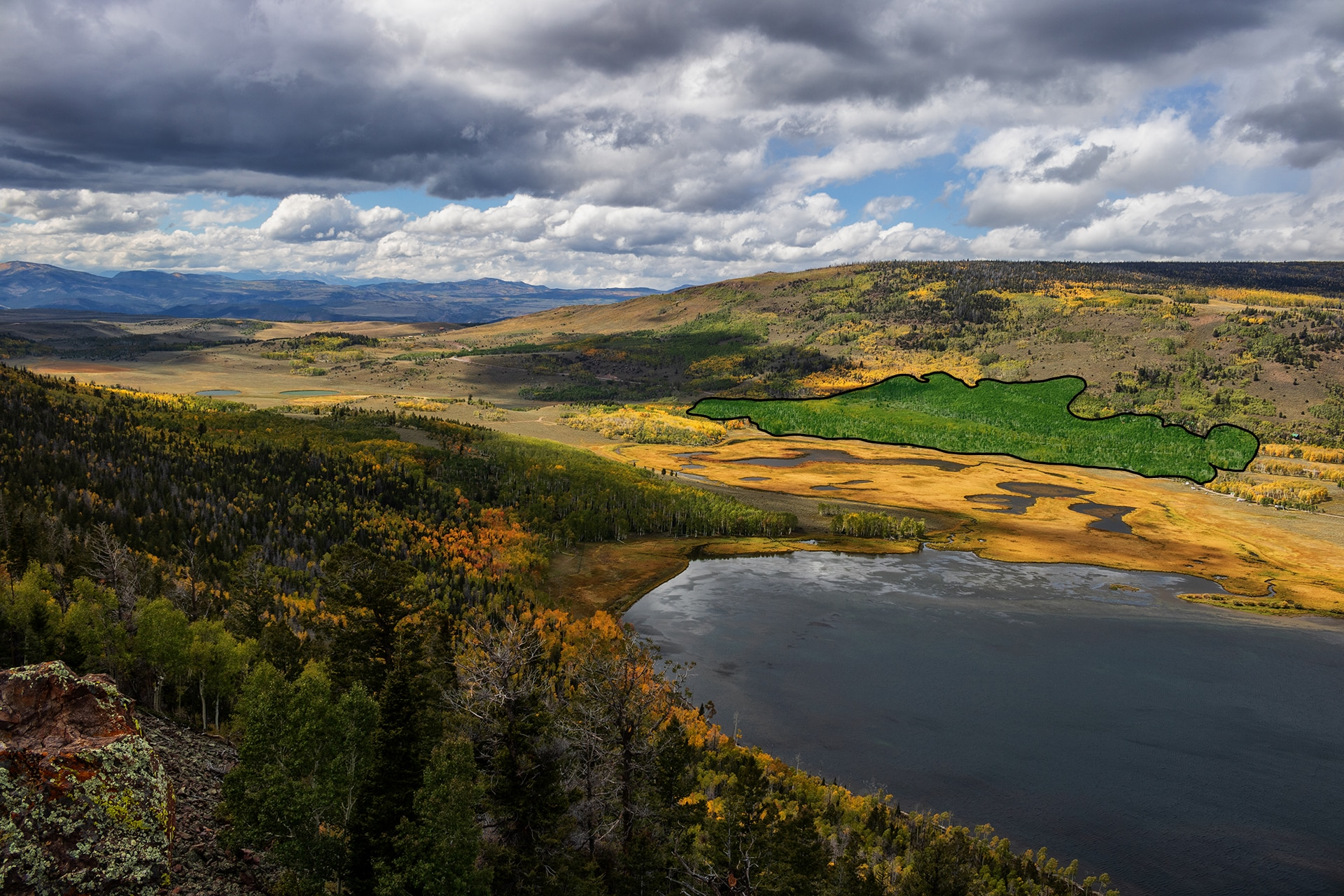The sounds of Pando, the tree that is its own forest, have been released in an effort to promote awareness of this astonishing plant and the threats it faces.
Recordings of humpback whale songs released as records in the 1960s helped turn public opinion in most of the world against whaling and save not just humpbacks but many whale species from extinction. Now, an acoustic technician hopes to achieve something similar with a tree larger than an entire pod of whales, the quivering aspen (Populus Tremuloides) known as Pando.
Pando currently consists of 47,000 connected aspen stems. Although they look like individual trees, these stems are connected at the root. They capture nutrients and produce leaves together, proving they are more than just clones – they are actually components of the same organism, which will live and die together.
An outline of the area Pando covers, with the lake whose water may account for much of its success in the foreground
Image Credit: Lance Oditt, friendsofpando.org | GIS Map: Paul Rogers & Daren McAvoy
At an Acoustical Society of America conference in May, Jeff Rice and Lance Oditt of Friends of Pando presented what they call Pando’s “acoustic portrait”. At the time, only those who attended the conference got to hear the sounds, but they have now been released to the world.
Rice originally recorded Pando’s leaves rustling for the New York Times Magazine in 2018, and in 2022 returned to capture it from more angles, including its root systems, thought to reach depths of 27 meters (90 feet). Despite being in the ground, not water, Rice realized after a thunderstorm he could hear a deep roar that he thinks comes from the roots using a hydrophone.
“The sounds are beautiful and interesting, but from a practical standpoint, natural sounds can be used to document the health of an environment,” Rice said in a statement. “They are a record of the local biodiversity, and they provide a baseline that can be measured against environmental change.”
Rice and Oditt have not conclusively demonstrated the sound they are picking up from the Earth Pando grows in comes from the roots. However, experiments the pair conducted, such as banging on one branch and listening for vibrations near another, support the idea.
“It’s similar to two cans connected by a string,” Rice said. “Except there are 47,000 cans connected by a huge root system.”
“Pando challenges our basic understanding of the world,” Rice said “The idea that this giant forest could be a single organism defies our concept of the individual. Its vastness humbles our sense of space.”
“While it started as art, we see enormous potential for use in science. Wind, converted to vibration (sound) and traveling the root system, could also reveal the inner workings of Pando’s vast hidden hydraulic system in a nondestructive manner,” said Oditt. By tracing the way sound moves through the vast system, the pair hope to locate insect colonies and learn the depth of the roots and how water is dispersed through Pando.
Nevertheless, the original aim continues as well. Friends of Pando like to point out that many errors are common in reporting about their beloved tree. These range from describing it as the largest living organism (a prize claimed, at least by area, by the humongous fungus) to exaggerating or understating threats it faces. As they note, both are very unhelpful to efforts to protect it.
Pando is believed to be 8-12,000 years old, although accurate testing is difficult. Wild claims for 10 or 100 times this age are impossible, because its location was covered in ice during the last glacial maximum. It covers 43 hectares (106 acres) and weighs 6,000 tonnes (13 million pounds), at least three times the largest redwood and up to ten times its fungal rival
The sounds were first played publicly at the 184th Meeting of the Acoustical Society of America. The sounds can now be found at Ecosystem Sound
Source Link: Listen To The Eerie Sounds Of Pando, Earth’s Largest Living Organism
